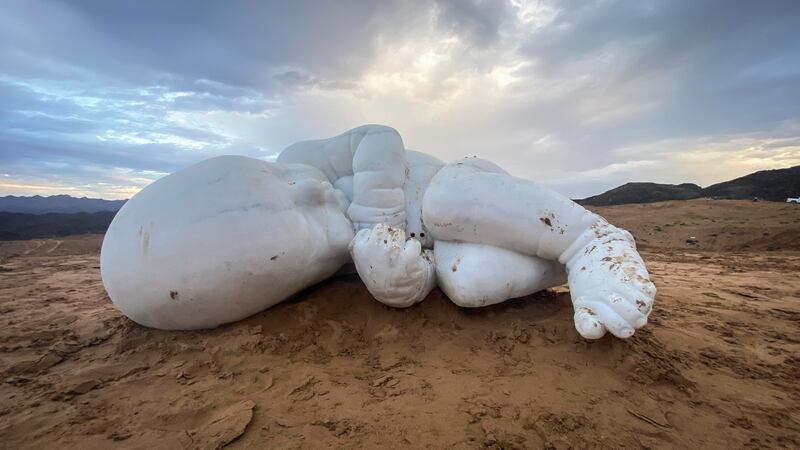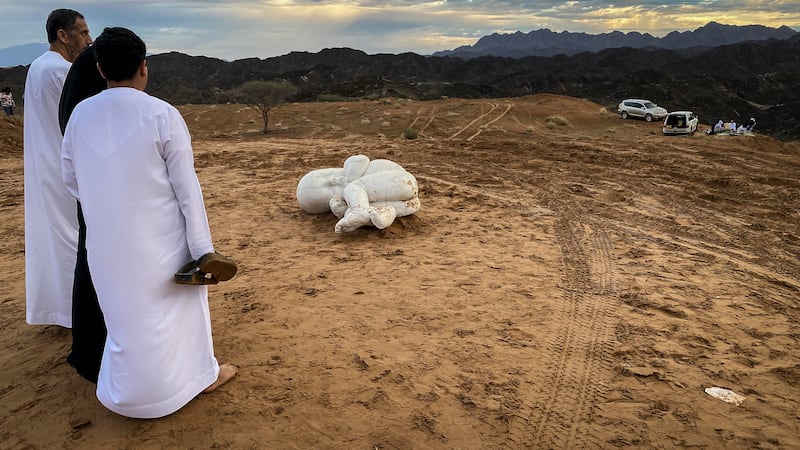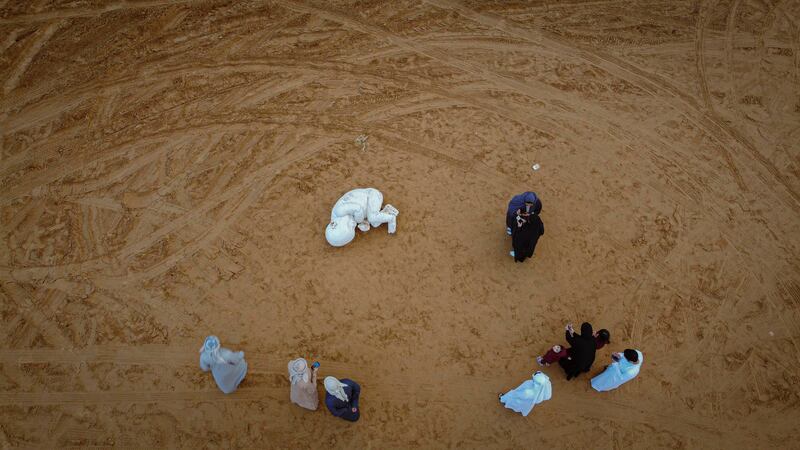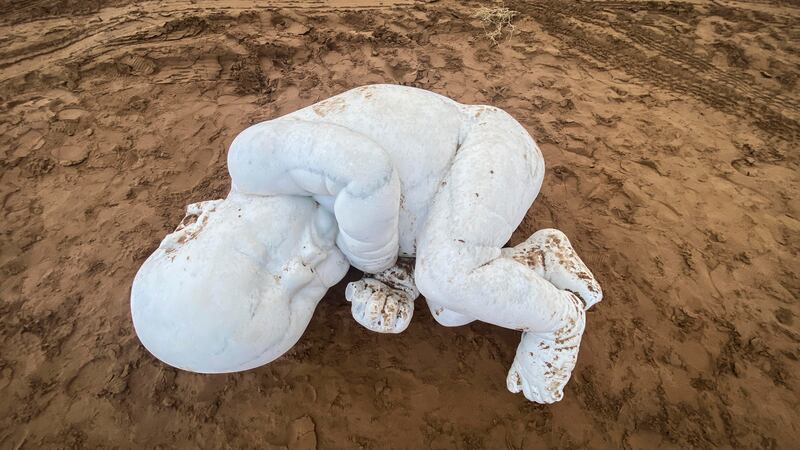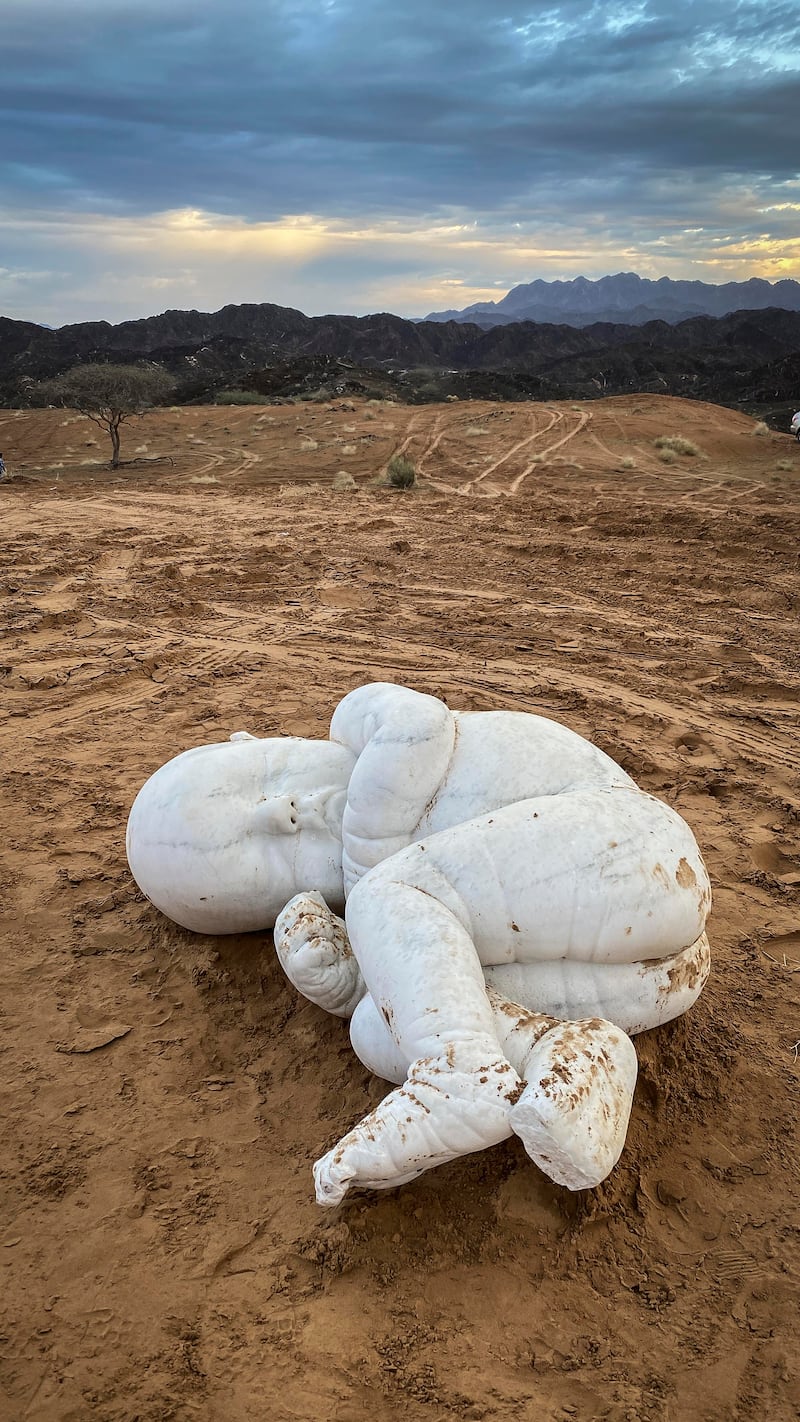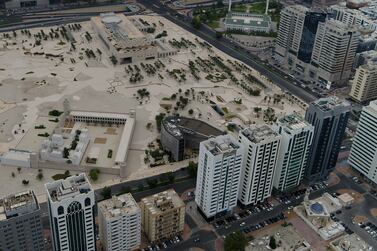25°22’08.6”N 56°02’57.7”E.
These are the co-ordinates to an “abandoned” infant sculpture that suddenly appeared in Fujairah at the end of last year.
Carved from white marble, the baby is curled up as if in slumber, its eyes closed and lips turned down. It is laid out, exposed to the elements, on the bare ground, surrounded by the rocky Fujairah mountains. Over the weeks, visitors have made the trek to seek out the sculpture – its location remains tricky to pinpoint despite the help of maps – after seeing it on social media.
Jago, the artist behind the work, first conceived of it in 2019 while he was living in New York City. “I saw a lot of homeless people living in the streets. When you have to run around every day to go to work, at some point, those people just disappear and become part of the environment. But I think the image of a baby will push us to stop and do something,” he tells The National.
That same year, he returned to Italy, and it wasn’t until 2020, after Covid-19 struck, that the sculpture was realised. Seeing the effects of lockdown on the vulnerable and the poor, including the homeless, Jago returned to the idea of an infant, a figure that easily connotes vulnerability and helplessness. Within eight months, he made Look Down (a play on “lockdown”), a baby in fetal position with a chain cuffed to its wrist.
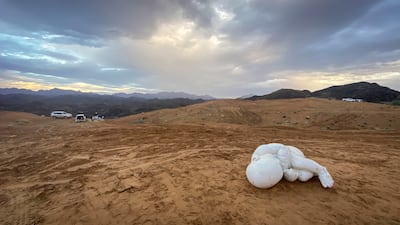
In his works, the sculptor, who was born in Italy, draws from personal reflection, but uses recognisable figures and motifs to express his ideas. With clay and marble as his materials of choice, he moulds and carves sculptures that have a hint of the grotesque, from models of anatomical hearts to ghostly figures shrouded in cloth, and even a baby nestled inside the cracked skull of a male bust.
Look Down rested in the Piazza del Plebiscito, a public square in Naples, where the artist resides. It was installed in late 2020, as Italy was tightening its restrictions again owing to the second wave of Covid-19 in Europe.
Part of the artist’s intention was not only to capture the attention of passers-by, but also to allow viewers to consider what they might have grown to overlook over time and the sections of society that the pandemic has hit the hardest.
Over the course of six months, public interaction with Look Down grew. “When you ‘abandon’ something on the street, it’s not yours anymore. You have to accept that everyone can use or interact with the sculpture in different ways. People touched it, and also destroyed it in some ways, so the sculpture changed. It’s like having a child that eventually has to live in the world and be affected by it,” he says.
When restrictions finally eased, Jago removed the sculpture from the plaza and began thinking about another place for the work. This time, he wanted a location that was more distant and harder to reach.
He thought back to his trip in Fujairah years ago. “It’s a very particular place because you can find mountains and the desert together. You have the sea, mountains and desert, but the sands don’t change as much, because the mountains protect it from the wind,” he says.
Co-ordinating with the Fujairah government, the artist was able to install his work at the base of the mountains of Al Haniyah desert, where it is meant to stay until March before being moved to a permanent location that will be revealed later on. Exposed to wind, rain and sun, the sculpture will eventually be altered and blemished, but the artist says he now sees these changes as part of the work.
With its new location, the work also earned a new name, Look Here. This time around, the artist sought a place that would be less accessible, so that the act of seeing the infant would become more intentional, deliberate.
“If you leave something in the desert and someone spends time and energy to go see it, to take a picture, it means a lot. For someone to do that means that he recognises something about himself in the work, in the image. There’s a connection,” he explains.
There is one significant change to the work from its previous iteration in Naples: the chain is gone. The artist, however, did not comment on the reason behind this decision except to say, “sometimes things happen and we have to accept it”.
Jago, however, says the message of the work remains the same: to compel the public to think about the most vulnerable among us and to cultivate a response of care as we would towards a child. But he also hopes the experience of finding and seeing Look Here among the mountains opens up the public’s imagination and outlook on the world.
“Humanity is curious. Humanity wants to participate and see something new. This is a primordial part of us. When we’re babies, we have something very powerful, we have curiosity and enthusiasm, but as we grow, we lose that. But we need it in our work, our lives. This is our power."
